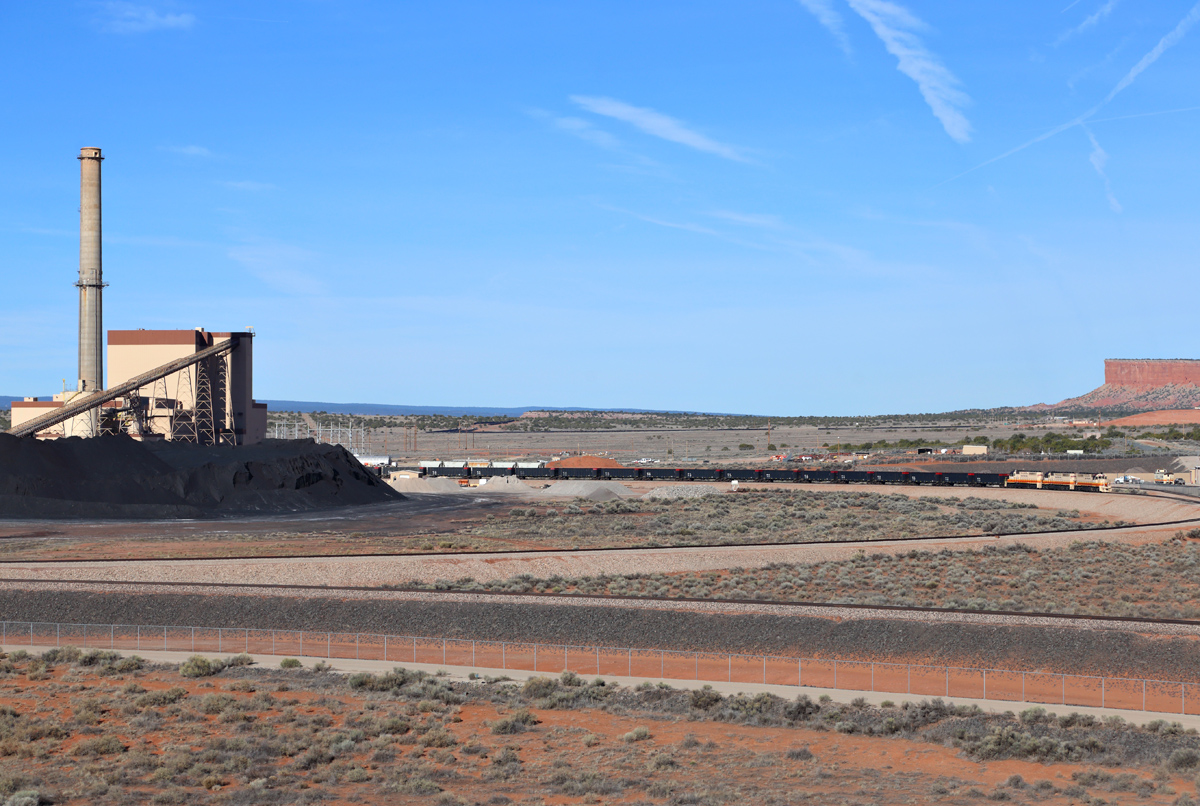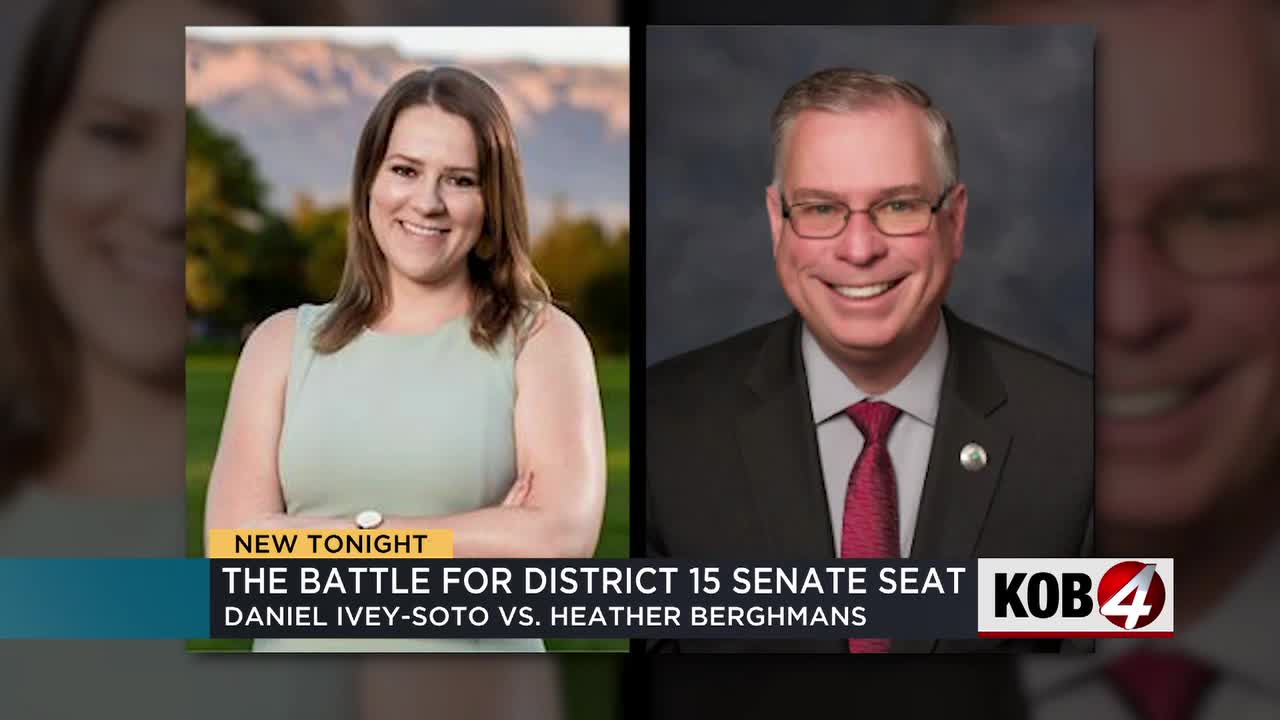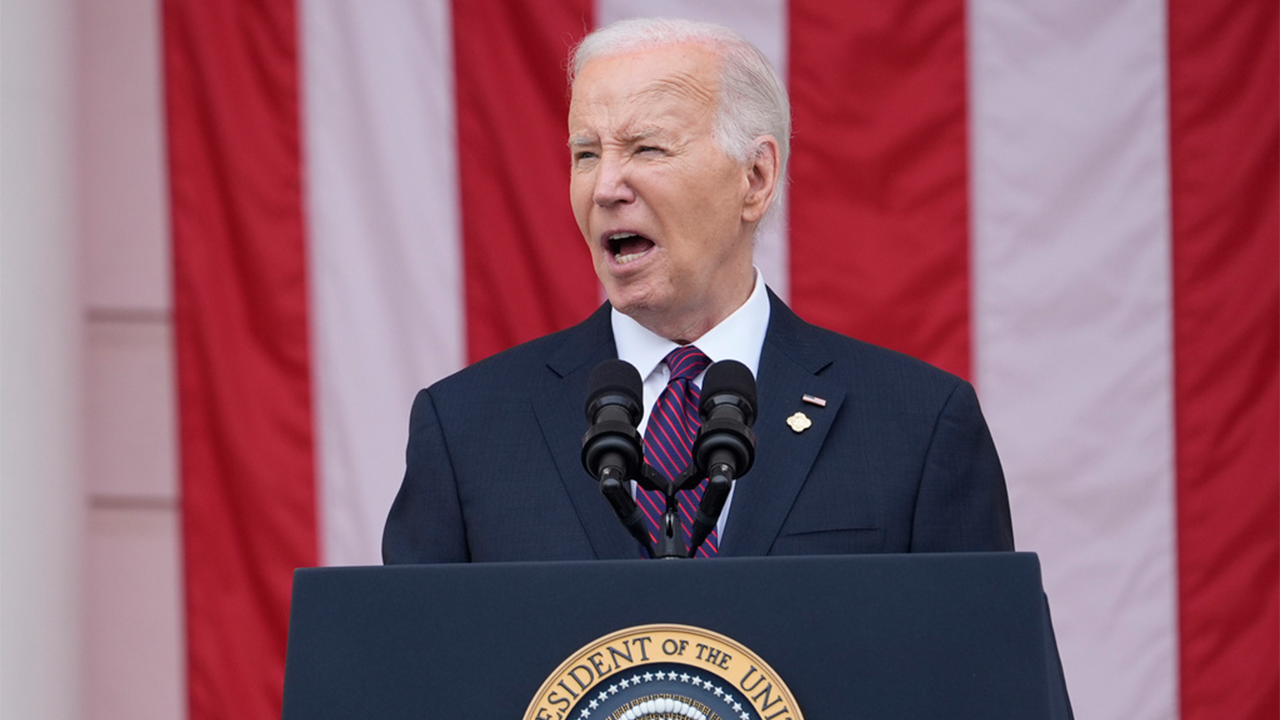New Mexico
Federal judge blocks New Mexico governor’s order suspending right to carry guns in public

Watch CBS News
Be the first to know
Get browser notifications for breaking news, live events, and exclusive reporting.

New Mexico
Like it or not, a hydrogen ecosystem is coming to New Mexico – NM Political Report

By Jerry Redfern, Capital & Main
Over the past month, in public meetings stretching from the Navajo Nation to Albuquerque, public officials and company representatives unveiled a picture of a new hydrogen energy industry being built in the northwest corner of New Mexico. The presentations reveal hydrogen production, transportation, power generation and carbon sequestration projects arcing across the Navajo Nation to Farmington and down to the I-40 corridor between Gallup and Albuquerque. Most of the projects are underway, and it’s clear they’ll rely on fossil fuels.
Tallgrass Energy sits at the center of all this activity and has the backing of the state’s biggest political player, New Mexico’s governor. The Denver-based company operates more than 7,000 miles of natural gas pipelines stretching from Oregon to Ohio, and it’s going all-in on creating the necessary pieces of a new economic base in New Mexico’s second-largest fossil fuel producing region. The region’s natural gas holds the key to many of the projects
“Hydrogen is huge!” Gov. Michelle Lujan Grisham proclaimed while speaking at an event in Farmington in April. What came next is what many in the region fear.
“Hydrogen uses the natural gas resources here we don’t know what to do with,” she said.
Actually, plenty of people know what to do with natural gas. The issue is that fewer and fewer people want to use it, even as more and more of it is being produced. Historically, natural gas has been used most significantly for electrical grid power generation in the U.S., but its use in that arena is declining as renewable energy prices drop in the face of government climate policies and ever-cheaper solar technology.
Meanwhile, natural gas prices have tanked due to a production glut caused by ever-increasing oil production using hydraulic fracturing, or “fracking,” in places like the Permian Basin, shared between New Mexico and Texas. Producers want the oil, which brings a market price well above the cost of its production. But, pulled from the well, that fracked oil comes commingled with the less desired natural gas. Over the past month, natural gas prices dipped below zero at a main pipeline transit hub in Texas due to the glut. Some companies are storing gas underground, awaiting better days and prices.
Enter hydrogen. The most plentiful element in the universe is a perfectly clean fuel when used to make electricity in a fuel cell. It’s generally cleaner than natural gas when burned to make heat, though the process produces nitrogen oxides that the EPA says damage the human respiratory system and contribute to acid rain.
The crux lies in how you make your hydrogen, which rarely exists on its own on earth. The cleanest, most energy-intensive way breaks water molecules into hydrogen and oxygen using renewable energy. The common way breaks off hydrogen atoms from the methane in natural gas. Either way, it takes more energy to make hydrogen than it provides when converted to useful energy. When made with natural gas, the process also produces a lot of climate-damaging carbon dioxide. That defeats hydrogen’s clean bonafides unless the carbon dioxide is captured and buried underground, a process that uses even more energy.
Furthermore, the natural gas production and transportation process often leaks, sometimes a lot. That gas is mostly methane, which is 80 times more capable of warming the atmosphere than carbon dioxide in the first 20 years after it’s released.
The federal government incentivized so-called low-carbon hydrogen production from natural gas with carbon sequestration in the Inflation Reduction Act of 2022. Many worry that this will lead to increased greenhouse gas emissions in light of New Mexico’s rocky track record of policing its oil and gas producers. All of this means a fuel promoted to fight climate change could actually exacerbate it, and cost a lot, too.
“How companies choose to produce that hydrogen will fundamentally be a business decision they must make,” said Michael Coleman, director of communications to Gov. Lujan Grisham. “Our greatest opportunity as a state is producing hydrogen from a range of feedstocks.”
Gov. Lujan Grisham has stumped for hydrogen for years, with little support from the state’s Legislature or environmental groups. She also sought a multibillion-dollar grant from the federal government to create a multi-state hydrogen ecosystem centered in New Mexico’s San Juan Basin, but the feds snubbed it last October. Hydrogen investments face a bumpy road in other states as well.
Nonetheless, Lujan Grisham forges on — she went to the Netherlands last week to drum up more hydrogen investments. Meanwhile, testing and planning chug along, with Tallgrass linking many of the far-flung pieces together. “The governor is looking to attract all kinds of hydrogen businesses to New Mexico,” Coleman said. “Tallgrass’ proposal draws all of the attention because of its scale but is hardly the only initiative under way.
“One of the more notable misconceptions that we’ve struggled to overcome is the view that we are focused on a singular point-to-point hydrogen project,” said Steven Davidson, vice president of government and public affairs for Tallgrass Energy. He’s referring to a hydrogen pipeline being developed by GreenView, a Tallgrass subsidiary. “We are working to create a clean energy ecosystem in coordination with many other parties,” he said.
One of those parties is the Four Corners Clean Energy Alliance, an advocacy group promoting hydrogen development and associated technologies in the region on behalf of GreenView and Tallgrass. One of the group’s board members is an executive at Tallgrass. Both the group’s interim director and director of communications also work for the Consumer Energy Alliance, an industry trade group sponsored in part by a who’s-who of fossil fuel energy producers.
The Tallgrass ecosystem includes a carbon capture and sequestration project with New Mexico Tech. The university has been studying the geology of the San Juan Basin since 2020 with the goal of getting three sequestration wells operational in a few years. The project is in the middle of its federal permitting process and could be approved sometime next year.
It also includes the Escalante coal-fired power plant retrofitted to burn hydrogen, along I-40 between Albuquerque and Gallup and the hydrogen pipeline linking Farmington to central Arizona and crossing the Navajo Nation, a controversial project still in the planning stages.
It’s expected to include a hydrogen production facility or two in or near Farmington, with exact locations to be determined.
And there’s more. At a San Juan County Commission meeting in April, the lead researcher on the carbon sequestration project pointed out that if the Escalante power plant is to reach its carbon-free objective, Tallgrass has to build another pipeline, this one for carbon dioxide, running from the Escalante power plant to the future carbon sequestration wells, roughly 100 miles to the north and crossing the eastern reaches of the Navajo Nation.
Meanwhile, the hydrogen pipeline project has already drawn fire from Navajo opposed to further energy projects on the Nation. The tribe has a 100-year history of outside companies coming in, making fortunes from Native resources and leaving environmental messes behind.
“All the projects that have ever been on Navajo [Nation] made those companies a lot of money,” said Jessica Keetso, who is Diné and an organizer with Tó Nizhóní Ání or Sacred Water Speaks, a Navajo water rights and environmental protection group. Historically, she said, they don’t clean up after themselves. “They get away with not doing reclamation, for everything from oil and gas, uranium to coal,” she said.
Many are also unhappy with how Tallgrass has gone about drumming up support from the tribe’s widely spaced, often-impoverished population.
At a meeting of the Navajo Nation Resources and Development Committee in Albuquerque in late April to discuss the hydrogen pipeline project, committee member Rickie Nez told Tallgrass representatives, “No more gift cards! No more gift cards! It makes you look like you’re bribing someone.”
GreenView representatives had been giving out gift cards to tribal members who attended chapter house meetings where the pipeline was discussed. (Chapter houses are the most local form of government on the Navajo Nation.) At some meetings, tribal members also voted on resolutions to allow the pipeline to cross their chapters. Davidson said the company came up with the idea “in consultation with respected cultural advisors from the Navajo Nation … to lessen the burden to the individual to encourage them to participate.” He said that the cards were for $25 to $50. He also heard that the cards “met with some concern about optics. We completely understand that point.”
In addition, at the Resources and Development Committee meeting, Adam Schiche, whose online profile says he is the vice president for international business development at Tallgrass, said that GreenView representatives met with and paid individual grazing permit holders $500 for the possibility of working on land where livestock grazes. Davidson later said, “We have no qualms” in offering upfront payments, treating Navajo permit holders “exactly like landowners off the Nation.” He said further money would be given if the project goes forward.
“Money talks. Money is persuading people, which is a very sad thing to see,” said Keetso. “The tactics are actually paying off for them because two months ago they didn’t have any resolutions.”
For roughly two years, representatives from both Tó Nizhóní Ání and GreenView have made their cases for or against the pipeline and asked chapters to consider resolutions supporting or opposing it all along the proposed pipeline route. At the April Resources and Development Committee hearing, Schiche said that Tallgrass representatives had gathered resolutions in favor of the pipeline from five chapters. Tó Nizhóní Ání has gathered 15 against.
Tallgrass’ main business is natural gas, and while the focus on hydrogen is touted as part of a climate change solution, it’s clearly connected to those fossil fuel operations. “We believe every practical option to decarbonize should be advanced — including the decarbonization of natural gas to make … hydrogen,” Davidson said. He sees hydrogen keeping the lights on, firing power plants when the sun goes down and the winds calm. “Hydrogen is a proven way to convert and store that clean electricity for when it’s needed,” he said. That’s the idea that ties natural gas to carbon sequestration, to the Escalante hydrogen-fired power plant 100 miles west of Albuquerque and to a 200-mile pipeline across the Navajo Nation to central Arizona.
Powering the electric grid with expensive hydrogen isn’t universally popular. The Rocky Mountain Institute, a Colorado-based nonprofit that helps businesses and governments transition away from fossil fuels, promotes a common view for hydrogen’s best uses. “Fertilizer, oil refining and petrochemicals, steel manufacturing, and long-distance heavy-duty transport are no-regrets applications of hydrogen today,” they write. Hydrogen power plants aren’t what’s needed now.
In the end, New Mexico’s discussion about hydrogen is about money. At the Resource and Development Committee meeting, Schiche told the group that $400,000 a year would be split among chapter houses along the pipeline route. In addition, the Nation could choose either a percentage stake in the pipeline company or annual payment for gas moving through the line.
“Will this really kickstart our economy, our Navajo Nation economy?” Keetso said later. “I think that’s questionable. If 50 years of coal mining couldn’t do that, hydrogen is not going to do that.”
Long-term jobs are a perennial hope for any projects on the Nation, where unemployment runs high. Schiche said that there would be a lot of construction work while building the project, but “the pipeline itself doesn’t generate a lot of jobs.” He said those would be at two hydrogen production sites somewhere around Farmington — which is not on the reservation.
Keetso calls on bigger groups to fight alongside Tó Nizhóní Ání against the hydrogen projects. She said, “I just wish big greens would get off the fence and say, ‘Hey, this hydrogen may be the solution for some things. But the way that this company is doing it is wrong.’”
New Mexico
New Mexico primary election: Berghmans aims to unseat Ivey-Soto

One of the biggest showdowns is in northeast Albuquerque, where Democrat Heather Berghmans is running to unseat Democratic state Sen. Daniel Ivey-Soto.
ALBUQUERQUE, N.M. — Political candidates are gearing up for next Tuesday’s primary election.
One of the biggest showdowns is in northeast Albuquerque, where Democrat Heather Berghmans is running to unseat Democratic state Sen. Daniel Ivey-Soto. The Senate District 15 race is easily one of the nosiest this year, as an accomplished state senator with a history of controversial behavior tries to hang onto his seat.
Ivey-Soto was first elected into the Roundhouse over a decade ago, and he’s helped craft dozens of new laws in New Mexico. However, he’s also faced numerous sexual harassment allegations and that’s playing a role in his competitor’s campaign.
Berghmans is no stranger to the Roundhouse or the allegations of what happens inside.
“What I’ve heard from the community is that they want a leader that can work well in the Roundhouse to get, to find solutions to these problems and not be a distraction,” Berghmans said.
Berghmans is focused on issues like homelessness and public safety, but her campaign website challenges Ivey-Soto, saying he “has been credibly accused by multiple women of sexual harassment and other forms of abuse over the last two years.”
“It’s important for me to let voters know how he conducts himself in the Roundhouse,” she said.
In 2022, multiple women accused Ivey-Soto of sexual harassment and aggression. That list includes a current state lawmaker, a former lobbyist, and gun violence prevention advocate Mirando Viscoli.
“He, between two doors in a building where there are no cameras, yelled and screamed at me and violently pointed his finger at my face, in my face,” Viscoli said. “It was one of the worst moments of my life.”
Ivey-Soto denies the allegations, but he did step down as chair of the Senate Rules Committee after a leaked report revealed there was probable cause he violated anti-harassment rules.
“I do believe that actually, that initial investigation should not be done by the Legislature,” Ivey-Soto said. “Because I think the public naturally is going to be suspicious either way.”
The New Mexico State Ethics Commission dismissed a similar ethics complaint against Ivey-Soto last year. The senator says revisiting the allegations is a distraction from accomplishments, like a new pretrial detention bill.
“It’s been pretty stressful,” Ivey-Soto said. “You know, we’ve been really wanting to talk about the issues, talk about a lot of the bills that I’ve been working on, the policy issues that I’ve been passing, and the things that I’ve been doing in the district.”
Ivey-Soto pointed out that several of his fellow state senators have donated to his reelection campaign, and one even appeared in his campaign ad extending their support. However, Viscoli argues that should not excuse the numerous accusations of bad behavior.
Whoever wins the primary will likely face Republican Craig Degenhardt in the general election this November.
New Mexico
New Mexico oil wells
-

 Movie Reviews1 week ago
Movie Reviews1 week ago‘The Substance’ Review: An Excellent Demi Moore Helps Sustain Coralie Fargeat’s Stylish but Redundant Body Horror
-

 News1 week ago
News1 week agoVideo: A Student Protester Facing Disciplinary Action Has ‘No Regrets’
-

 Movie Reviews1 week ago
Movie Reviews1 week ago‘Rumours’ Review: Cate Blanchett and Alicia Vikander Play Clueless World Leaders in Guy Maddin’s Very Funny, Truly Silly Dark Comedy
-

 Movie Reviews1 week ago
Movie Reviews1 week ago‘Blue Sun Palace’ Review: An Intimate, Affecting and Dogma-Free Portrait of Chinese Immigrants in Working-Class New York
-

 Culture1 week ago
Culture1 week agoFrom Dairy Daddies to Trash Pandas: How branding creates fans for lower-league baseball teams
-

 World1 week ago
World1 week agoPanic in Bishkek: Why were Pakistani students attacked in Kyrgyzstan?
-

 Politics7 days ago
Politics7 days agoAnti-Israel agitators interrupt Blinken Senate testimony, hauled out by Capitol police
-

 World1 week ago
World1 week agoRussian court seizes two European banks’ assets amid Western sanctions




















